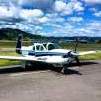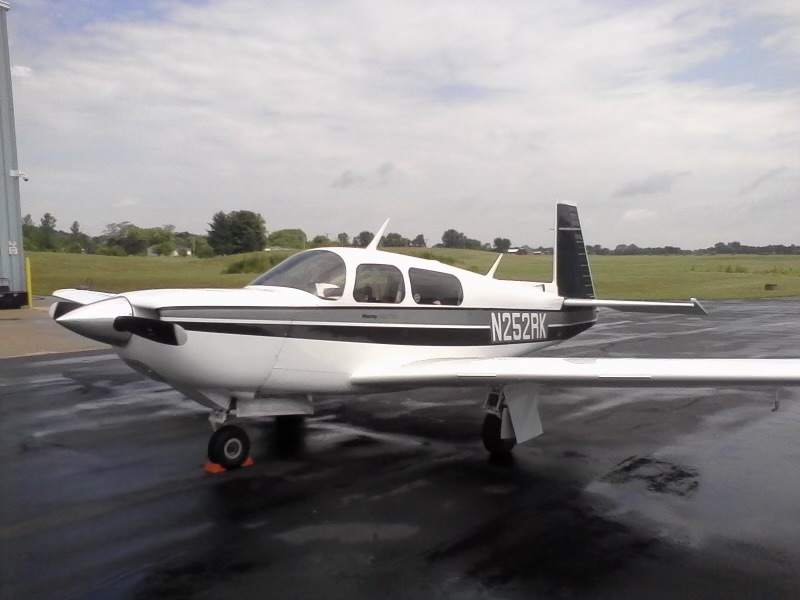-
Posts
5,467 -
Joined
-
Last visited
-
Days Won
25
Content Type
Profiles
Forums
Blogs
Gallery
Downloads
Media Demo
Events
Everything posted by Ragsf15e
-
Thanks.
-
Mine had a finicky butterfly valve that was pretty easy to adjust with basic tools and no parts. Open up the air / heat mixing box attached to the firewall on copilot side and see what you’re dealing with. You either have slide or butterfly valve.
-
Where’d you send the servo, divider , etc? Recommend them? I’ve been searching my logs and can’t find the last overhaul. At least 1998 and 1000hrs. Maybe more. I need to overhaul this annual.
-
Agree they probably messed up. They have fairly specific rules on how far before the faf they have to get you an intercept onto final. It’s weather dependent too. Either way, proceeding directly to the faf isn’t good for all the reasons above. Would’ve been tough at the time, but “request an intercept heading to final” might have got what you expected. That was probably an uncomfortable descent.
-
Someone smarter than me will definitely be along soon, but isn’t there an adjustment on the fuel servo to increase fuel flow? Yeah, I just took off at sea level yesterday and saw 18.5gph on takeoff roll. Chts stay below 360 in the climb. I do notice a rise in oil temp with chts, but it’s not more than about 10 degrees higher oil temp with chts at 380 vs 330.
-

Is this a oil cooler restrictor plate?
Ragsf15e replied to Brian E.'s topic in Vintage Mooneys (pre-J models)
That’s pretty high temp... vernatherm temp control working? There’s a way to test it with hot water, but one of our smart AMEs is gonna have to explain it. -
Jeez, that does help! I was picturing vertical bolts, appears they’re horizontal, aligned both fore/aft and laterally in line with the wing. Thanks! Rags
-
Thanks, so from the interior side panels, then “strips” (I’ll have to find these, not sure what they are), then see down? Thanks for the heads up on tape and the nuts!
-
So a couple years ago at a well known msc, the IA noted “light corrosion at wing attach bolts, cleaned, applied acf50.” I’m now in a very dry climate, stored in a hangar, but occasionally fly in rain or stay overnight near the rainy coast. And I’m always anxious about corrosion on a 51 year old airplane. If I wanted to inspect the area again and/or apply an acf fog, how to I get there? From the cabin down or up from the belly?
-

Let’s start over - Mooney caravan incident
Ragsf15e replied to bradp's topic in Mooney Safety & Accident Discussion
Well that’s just plain dangerous! Look closely, there’s only 1 aircrew! It’s an F15c, they think low level is anything below 10,000’! Now if it was an E model, then it’s just fine... -
I don’t disagree with that at all. But it would be misleading to say it can land in a 25 knot crosswind, except that 25 knots has to be at 25’ above the ground and it’s only 15 knots at 3’ up.
-
I respect your opinion but disagree. 25kts is a significant amount of x wind. If you’ve got 25 knots at a 45 degree angle, you’re looking at about 15 knots crosswind component and that’s probably right at the rudder limit. The extra speed helps on final and gives you more rudder/aileron authority, but you still have to slow down to land. Now you might not flare it out to a full stall and roll it on, but you’ve got to slow enough to get a safe landing attitude. At that slower speed, you’ll start to drift laterally. It will be tough to see, but the gear will feel it!
-

Altitude bust - my NASA report from today
Ragsf15e replied to DXB's topic in Mooney Safety & Accident Discussion
Sorry I read this one so late. Seems like it was all hashed out pretty well... even convinced PTK that his initial thoughts were wrong I think? One thing to mention, the IF altitude in the example is an at/above altitude (single line under the altitude). There are many times I’ve been cleared to begin an approach above this minimum altitude. Maybe it’s just out west? Maybe it’s just the approaches I fly? Either way, it’s up to you as the pilot to figure out if this higher altitude will work for your descent and request lower if it won’t. At KPUW, I’ve been cleared for the VOR approach when 5,000’ above the IAF altitude with no expectation of lower clearance. Of course, there’s a good long holding entry to descend in. Also, when not to do a PT from AIM... SNERT acronym. Straight in, No pt routing, Established in holding, Radar vectors, Timed approaches (nobody does this anymore). -

Let’s start over - Mooney caravan incident
Ragsf15e replied to bradp's topic in Mooney Safety & Accident Discussion
Re: wake turbulence & wingtip vortices In general, formation positions and references are designed for specific airframes and take into consideration both wingtip vortices and prop/jet wash. Anyone flown a glider and “box the wash”? Anyway, vortices and prop wash definitely exist and can be a problem if you’re out of position and end up in them. They do not suddenly move an airplane forward however. Generally they cause turbulence and/or a rolling motion. If you stay in position you should not be in either. I’ve flown lots of “close trail” which is slightly below and 1-2 ship length behind lead. When refueling, you’re actually under the tail (overlapping airframes) but then tankers mostly don’t maneuver more than 30 degrees bank. Anyway, in close trail practice in a HP prop plane, we did 90 degrees bank lazy 8s and barrel rolls. We trained hard, so the pilots were very current. Students learn it fast though and were generally competent in a couple of flights. They were not allowed to do it solo because the instructor in lead couldn’t see them. What makes close trail tough is lack of visual cues. If you’re forward or aft in fingertip, it’s obvious to everyone. In close trail, lead looks a little bigger or smaller, but your perspective makes that pretty difficult to judge, especially for those with less experience. Closure in close trail is extremely difficult to judge. In fact, we basically taught lead to set power and never change it. So, my old school, grouchy fighter pilot says anytime a wingman hits lead, it’s the wingman’s fault. My newer age civilian pilot says that if lead made large unplanned power changes (or speedbrakes), he might be (somewhat) at fault. Let the NTSB decide. -
When flying a 30 year old (or in my case, 51 year old) airplane, I tend to be very conservative on performance planning. Like if my poh takeoff or landing distance is more than 50% of available runway, I will reconsider my plan. Does reconsider limit my destinations? Sometimes. Does it necessarily mean I won’t do it? No. Does it mean I’ll change my fuel and passenger load? Definitely. Time of day (temp)? Definitely. If you’re counting on making book values to perfection, it will eventually catch up with you.
-

Is posting airplane issues therapeutic?
Ragsf15e replied to Greg Ellis's topic in Vintage Mooneys (pre-J models)
Good therapy. -

B&C Standby Alternator Field Approval
Ragsf15e replied to Marauder's topic in Avionics/Panel Discussion
Im interested in these too as I’m about to go all electric. How does it tie into the electrical system? Does it just cover alternator failure? How many amps? -
Mike Busch has a good article about tracing oil consumption. It’s either leaking, coming into the cylinder(s) through the valves, or the piston rings aren’t working right (or are broken). Those are basically the only 3 ways oil escapes. Each leaves a different symptom. Plugs, belly, and exhaust pipe are areas to investigate for residue. Do a compression check too... Now I’m no mechanic, so the above is simplified, but that’s the gist. Do some research before you take it to someone so you know roughly how they might diagnose it and what the symptoms they find might mean. Example... lots of oil on the belly out the breather tube may mean you’ve got a problem with blowby, potentially your rings. You’d probably want to do a compression check or boroscope to narrow down which cylinder.
-
I’m gonna use “lead mettalic” color on my belly. It can’t show on that, can it?
-
Real nice. I like the dark blue on the belly. I’m pretty anal and exhaust stains on white are really tough to remove as the paint ages. Dark blue will probably still look great.
-
In fact, these two commonly taught techniques are doing the same thing, using a forward slip to align the nose with the runway and bank to kill lateral drift. They only differ on when the are applied... final or flare. Just remember the RAP acronym and apply the controls in this order... Rudder to align nose with runway , Ailerons to stop lateral drift (will be opposite direction of rudder, thus slipping), Power added to compensate for uncoordinated flight. Probably no extra power needed if you do it in the flare. In either case, land aligned with the centerline, no side drift, likely upwind wheel first.
-
Exactly right!
-
I’m not trying to be a jerk and I don’t know everything... however, “weather vane” is generally something that can happen on the ground. Usually after a crosswind landing or possibly early in a takeoff roll. Typically when aircraft speed is lower. It can generally be controlled easily with correct inputs-especially if the nose is on the ground as you’ll have steering. During takeoff roll, ailerons turned into the wind and rudder to hold centerline are important. It’s possible, but pretty difficult to run out of rudder during takeoff. If you find yourself pointing somewhere or drifting somewhere you don’t want to go AFTER takeoff, you have a technique issue. Either more practice or a flight with a cfi should straighten you out. After takeoff it doesn’t matter how much rudder you have. Unlike landing in a crosswind, after taking off, you should stay coordinated. If a crosswind is pushing you off centerline, make a small (like 5 degrees) turn into the wind, then rollout. Yes, it looks like you’re flying sideways, but the ball should be centered and you’ll be holding right rudder for the climb. Landing requires a slip (ball not centered) and landing on one wheel to keep side loads down on the gear while maintaining centerline. After takeoff, you can crab into the wind to hold centerline which is much more efficient. How’s that sound?
-
I have a GTX345 hooked up to a gns430w. I get audio and visual alerts, but the aircraft are surprisingly close when it alerts. Like inside a mile, coaltitude, closing. They have been very accurate, however if it alerts and I wasn’t already looking at the traffic, I move the airplane. I had a guy in a Kodiak climb aggressively out of Sandpoint Idaho as I cruised by at about 5,000’AGL. I got “Traffic, 1 oclock low” just before I got a face full of big turboprop coming up from below the copilot side, maybe 15 L aspect. Spooked my wife and me both. I would love to see the alert parameters but have not been able to find them.



